-
GeneralGeneral
-
Organic Chemistry 2 Homepage
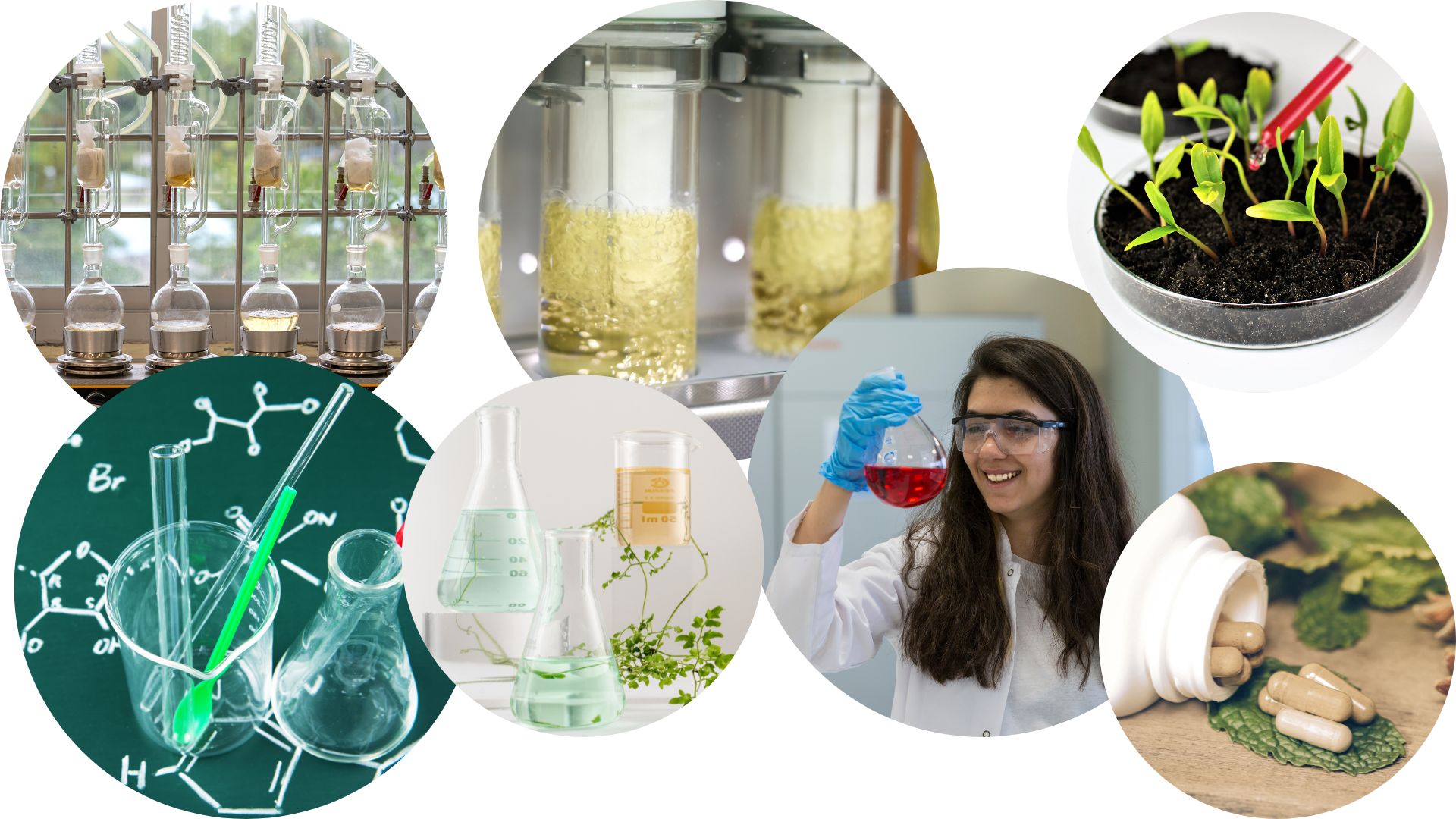

Welcome to the Organic Chemistry 2 course, part of the series for the Pre-Health Sciences Training Certificate. This course and the certificate are designed primarily for learners interested in preparing for and gaining entry to health-related programs and to help address the prerequisites for the Medical College Admission Test (MCAT). Our Organic Chemistry 2 course provides learners with a comprehensive overview of the fundamental principles of chemistry.
This course covers basic principles and concepts of Organic Chemistry, such as carboxylic acids, aldehydes, ketones, synthesis, the reactivity and chemistry of enolates, and the techniques used for the separation of mixtures, among others.
The Organic Chemistry 2 course is sponsored in part by the International Development Research Centre and the University of the Incarnate Word School of Osteopathic Medicine. Like all NextGenU.org courses, it is competency-based, using competencies based on the Association of American Medical Colleges’ Medical College Admission Test. It uses learning resources from accredited, academic, professional, and world-class organizations and universities, such as Rice University. This course was designed by Alixandria Ali, B.Sc.; Kabiru Gulma, B. Pharm, Ph.D. M.Sc., MBA; Sherian Bachan, M.Sc., B.Sc.; Marco Aurelio Hernandez, Ph.D., MSc; MSc; BSc.; and Felix Emeka Anyiam, MPH, MScPH, DataSc.
For publications on the efficacy of NextGenU.org’s courses, see NextGenU.org’s publication page.
There are seven (7) modules to complete, which provide an introduction to:
Module 1: Carboxylic Acids
Module 2: Aldehydes and Ketones
Module 3: Enolate Chemistry and Aldols
Module 4: Aromatic Systems and Amines
Module 5: Nitrogen-and Phosphorus-Containing Compounds
Module 6: Spectroscopy
Module 7: Separations and PurificationsThe completion time for this course is estimated at 69 hours, comprising 21 hours of learning resources, 41 hours of studying and assimilation of the content, and 7 hours of participating in learning activities and quizzes to assist learners in synthesizing learning materials. This course is equivalent to 1 credit hour in the U.S. undergraduate/bachelor’s degree system.
The course requires the completion of all quizzes, discussion forums, and practical activities to receive a course certificate. Practice quizzes are available throughout the course and contain ten multiple-choice questions each. After completing each module, quiz, and learning activity, at the end of the course, you will have access to a final exam consisting of 40 multiple-choice questions and a chance to evaluate this course. Participants have up to three opportunities to take the final exam and achieve the required passing score of >=70%. Once you have passed the final exam and completed the evaluations, you can download a certificate of completion from NextGenU.org and our course’s co-sponsoring organizations.
We keep your personal information confidential, never sell any of your information, and only use anonymized data for research purposes. Also, we are happy to report your testing information and share your work with anyone (your school, employer, etc.) at your request.
Engaging with this Course:
This free course is for students who have graduated from high school and want to prepare to become a health professional and/or pass the MCAT exam. You may also browse this free course for your personal enrichment. There are no requirements.
To obtain a certificate, a learner must first register for the course and then successfully complete the following:
- The pre-test,
- All the reading requirements,
- All quizzes and pass with 80% with unlimited attempts,
- All learning activities,
- The final exam with a minimum of 80% and a maximum of 3 attempts, and
- The self and course evaluation forms.
To obtain credit:- Complete all requirements listed above for the certificate, and
- Your learning institution or workplace should approve the partner-university-sponsored NextGenU.org course for educational credit, as they usually would for their learner taking a course anywhere.
NextGenU.org is happy to provide your institution with the following:- A link to the description of the course training so they can see all of its components, including the co-sponsoring institution,
- Your grade on the final exam,
- Your work products (e.g., discussion forum responses) and any other required or optional shared materials you produce and authorize to share with them,
- Your evaluations -- course and self-assessments, and
- A copy of your certificate of completion with the co-sponsoring organizations listed.
To obtain a degree, NextGenU.org co-sponsors degree programs with institutional partners. To obtain a full degree co-sponsored with NextGenU.org, registrants must be enrolled in a degree program as a student of a NextGenU.org institutional partner. If you think your institution might be interested in offering a degree with NextGenU.org, contact us.We hope you will find this a rewarding learning experience, and we count on your assessment and feedback to help us improve this training for future students.
Here are the next steps to take the course and earn a certificate:
- Complete the registration form,
- Take the pre-test, and
- Begin the course with Module 1: Carboxylic Acids. In each lesson, read the description, complete all required readings and any required activity, as well as take the corresponding quizzes.
-
Module 1: Carboxylic Acids
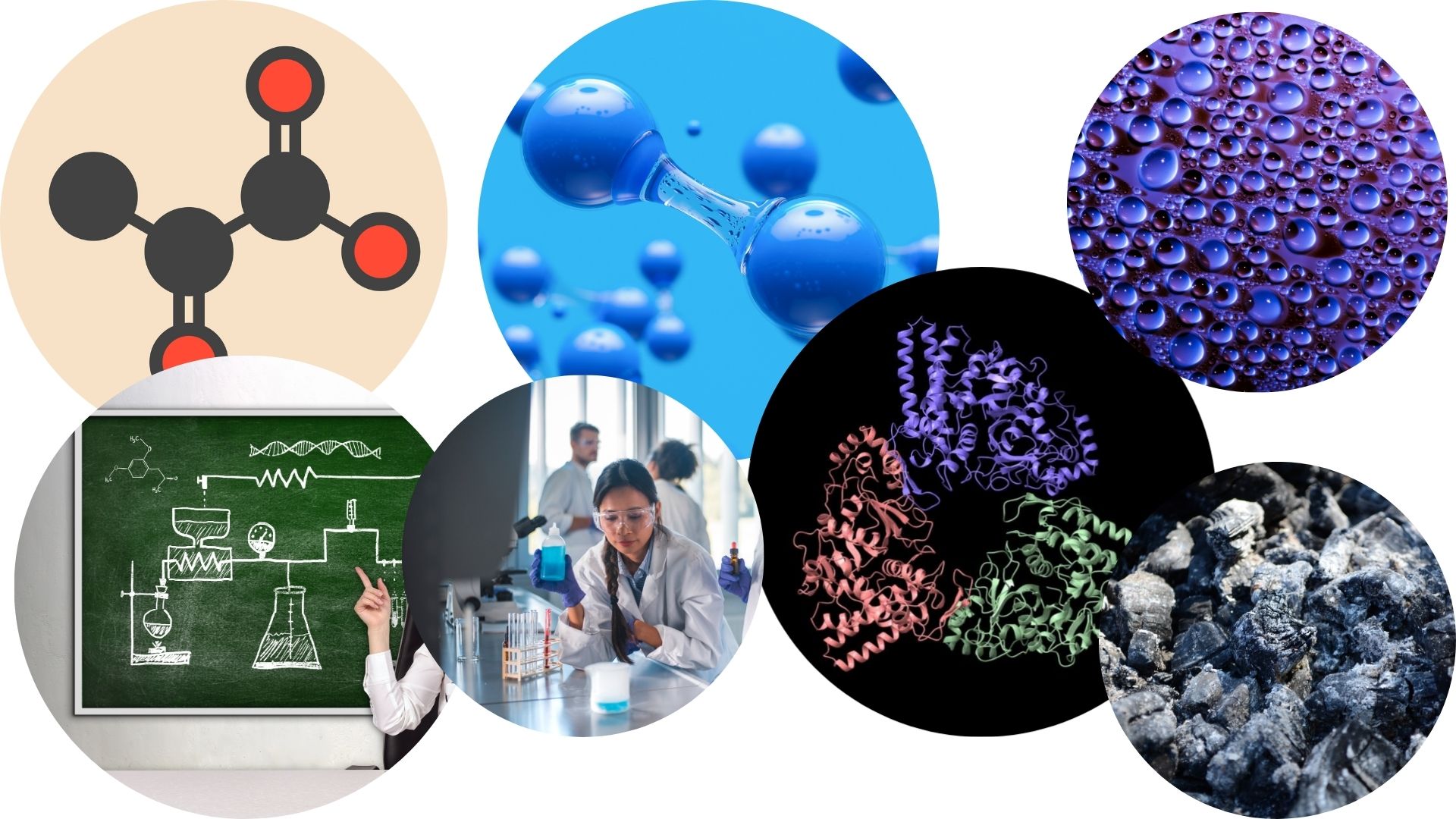 Instructional Goals covered in this module:
Instructional Goals covered in this module:- Understand the structure, composition, synthesis, reactivity, and nomenclature of carboxylic acids.
-
Module 1: Lesson 1: Carboxylic Acids
Upon completion of this module, students you will be able to:Student Learning Outcomes:
- Compare the physical properties and reactivity of carboxylic acids.
-
Describe the reaction mechanisms that demonstrate the processes by which carboxylic acids are synthesized.
- Identify common reactions of carboxylic acids.
- Describe the sequences to synthesize and transform carboxylic acids from starting materials to demonstrate an understanding of carboxylic acid reactions.
1 URL -
Module 1: Lesson 2: Synthesis of Carboxylic Acids
Upon completion of this module, students you will be able to:Student Learning Outcomes:
- Explain the underlying cause of the relatively high acidity of carboxylic acids.
- Predict the effects of additional substituents on the acidity of a carboxylic acid.
- Rank the acidity of comparable carboxylic acids based on their structure.
1 URL -
Module 1: Lesson 3: Carboxylic Acid Derivatives
Upon completion of this module, students you will be able to:Student Learning Outcomes:
- Apply the IUPAC rules for naming carboxylic acid derivatives, including the nomenclature for the cyclic version of the molecule.
-
Identify the reactant types used in acyl substitution reactions to form the major carboxylic acid derivatives, such as amides and esters.
- Describe the mechanism of nucleophilic acyl substitution reactions.
- Identify the conditions that would lead to spontaneous decarboxylation of a carboxylic acid.
- Predict the products of an acyl substitution reaction.
- Order carboxylic acid derivatives (anhydrides, esters, and amides) based on their reactivity.
- Explain how strong acid and strong base conditions would impact the mechanism of hydrolysis of an amide.
- Identify the nucleophile and electrophile within nucleophilic acyl substitution reactions.
4 URLs -
Module 1: Lesson 4: Alpha Substitution Reactions
Upon completion of this module, students you will be able to:Student Learning Outcomes:
- Identify the species that act as nucleophiles and electrophiles in aldol condensations.
-
Describe a condensation reaction.
- List the reaction types associated with aldol condensation.
- Describe the conditions, reactants, and products involved in a retro-aldol reaction.
- Identify an alpha carbon.
1 URL -
Module 1: Lesson 5: Carbonyl Condensation Reactions
Upon completion of this module, students you will be able to:Student Learning Outcomes:
- Identify the role of the beta hydroxide group in the general mechanism for an aldol addition reaction.
-
Describe the general mechanism for decarboxylation of beta-carboxy ketone or aldehyde.
- Identify the three steps (deprotonation or decarboxylation, attack, leaving/ collapse groups) involved with the Claisen condensation reaction.
- Describe the two steps (attack and collapse/ leaving groups) involved in the retro-Claisen reaction.
- Illustrate the general mechanism for conjugation addition (of a carbon nucleophile for a Michael addition) and beta-elimination reactions.
- Describe the general mechanism for the carboxylation of an enolate.
4 URLs, 1 Forum -
Module 2: Aldehydes and Ketones
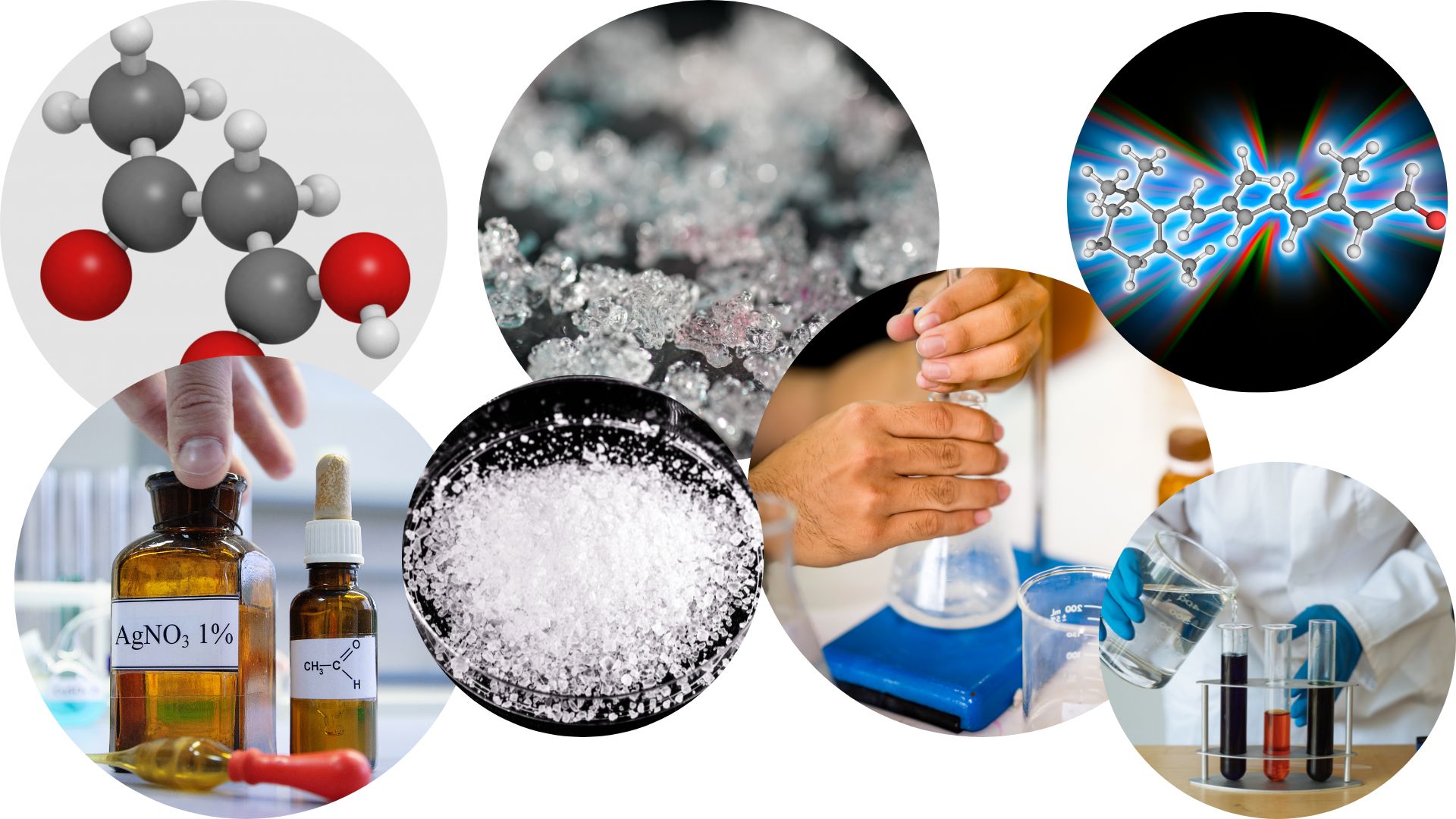 Instructional Goals covered in this module:
Instructional Goals covered in this module:- Understand the structure, composition, synthesis, reactivity, and nomenclature of aldehydes and ketones and the nomenclature of physical and chemical properties of aldehydes and ketones.
-
Module 2: Lesson 1: Properties of Aldehydes and Ketones
Upon completion of this module, students you will be able to:Student Learning Outcomes:
- Name and draw the structure of aldehydes and ketones using IUPAC rules.
-
Describe the physical properties and reactivity of aldehydes and ketones.
2 URLs -
Module 2: Lesson 2: Synthesis of Aldehydes and Ketones
Upon completion of this module, students you will be able to:Student Learning Outcomes:
- Explain the use of PCC and Jones' reagents for the oxidation of 1º- and 2º-alcohols and their conversion to aldehydes and ketones.
-
Explain the mechanism of Friedel-Crafts' acylation of aromatic compounds.
- Explain the reaction mechanisms for the synthesis of cleaved aldehydes and ketones from the hydroxylation of alkenes (reaction with osmium tetroxide or permanganate) of the vicinal glycols.
- Explain the synthesis and reaction mechanism of ozonolysis of alkenes to form an aldehyde product.
4 URLs -
Module 2: Lesson 3: Reactivity of Aldehydes and Ketones
Upon completion of this module, students you will be able to:Student Learning Outcomes:
- Explain the formation of stable hydrates and hemiacetals from adding water to aldehydes and ketones.
- .Explain the reaction mechanisms and distinguish the formation of acetals by the reaction of aldehydes and ketones with two equivalents of alcohol and the elimination of water.
- Explain the formation of imine derivatives from the reaction of aldehydes and ketones with ammonia or 1º-amines (Schiff bases).
- Break down the formation of enamine and cyanohydrin from the reaction of aldehydes and ketones with 2º-amines and hydrogen cyanide, respectively.
- Deduce the products formed by the reduction of aldehydes and ketones by complex metal hydrides and by adding organometallic reagents.
- Break down the reaction products and mechanisms for the reduction of aldehydes and ketones.
- Outline the oxidation of aldehydes to carboxylic acids using oxidizing agents.
6 URLs, 1 Forum -
Module 3: Enolate Chemistry and Aldols
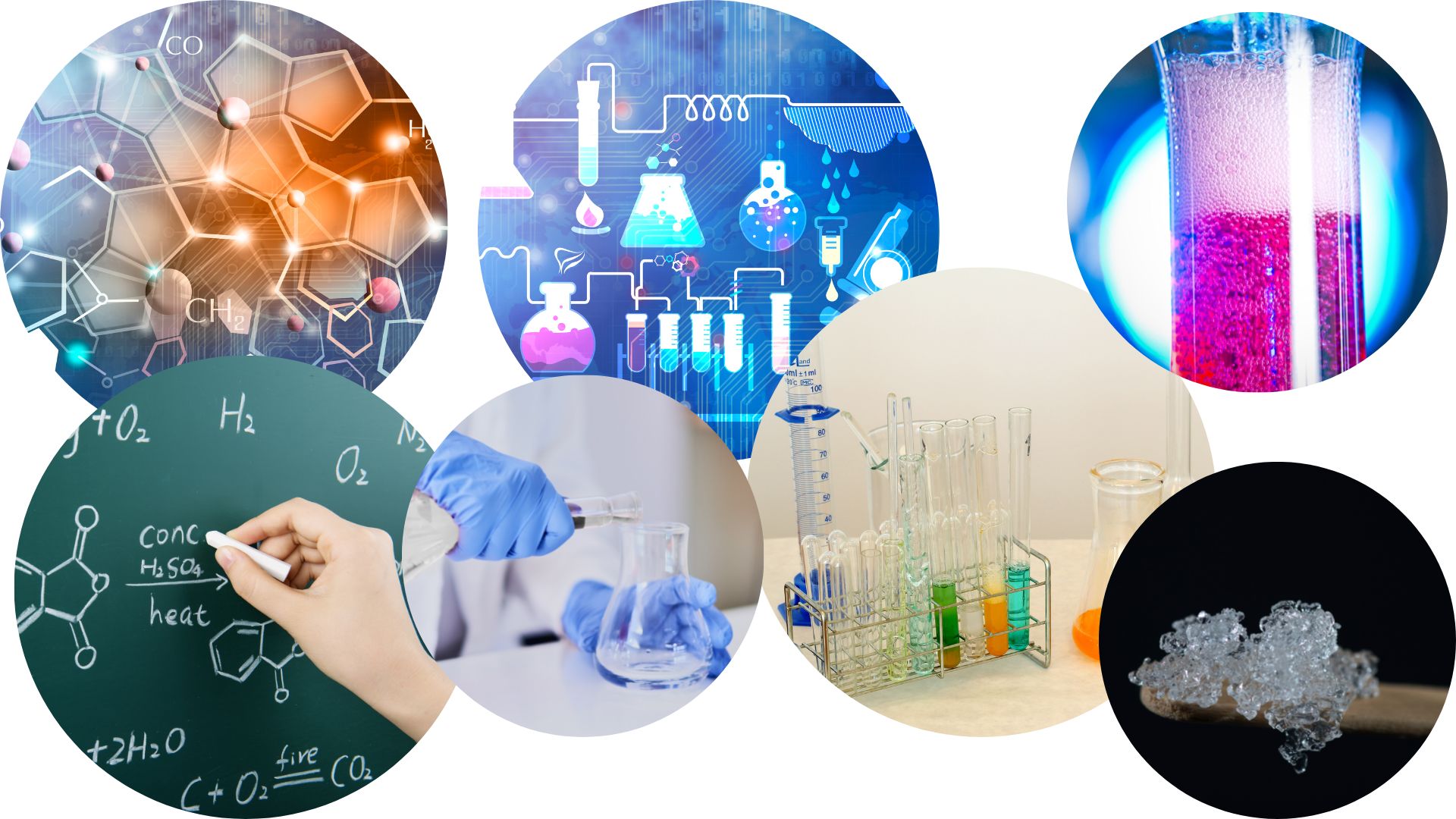 Instructional Goals covered in this module:
Instructional Goals covered in this module:- Understand the synthesis, reactivity, and chemistry of enolates.
-
Module 3: Lesson 1: General Principles of the α-hydrogen on aldehydes and ketones.
Upon completion of this module, students you will be able to:Student Learning Outcomes:
- Explain the acidic nature of α-hydrogens on aldehydes and ketones.
-
Compare the acidity of the α-hydrogens of aldehydes to those of ketones.
1 URL -
Module 3: Lesson 2. Enolate Chemistry
Upon completion of this module, students you will be able to:Student Learning Outcomes:
- Describe the relationship between steric hindrance and reactivity.
-
Define tautomerization and draw basic and acidic tautomerizations.
- Identify the thermodynamically favored tautomer of an aldehyde or ketone.
- Predict the role of an enolate carbanion in a reaction.
- Describe the conditions that favor keto and enol forms.
- Describe alpha carbon reaction mechanisms incorporating enols for neutral/ acidic reactions and enolates for basic reactions.
- Determine if a kinetic or thermodynamic enolate will form based on reaction conditions.
- Describe kinetic and thermodynamic enolate reaction mechanisms.
- Describe mechanisms for halogenation at alpha carbon and direct enolate alkylation.
8 URLs -
Module 3: Lesson 3: Aldol Reactions
Upon completion of this module, students you will be able to:Student Learning Outcomes:
- Understand diastereoselection.
-
Describe the role of Boron enolates in aldol reactions.
- Understand the Mukaiyama aldol reaction.
3 URLs -
Module 4: Aromatic Systems and Amines
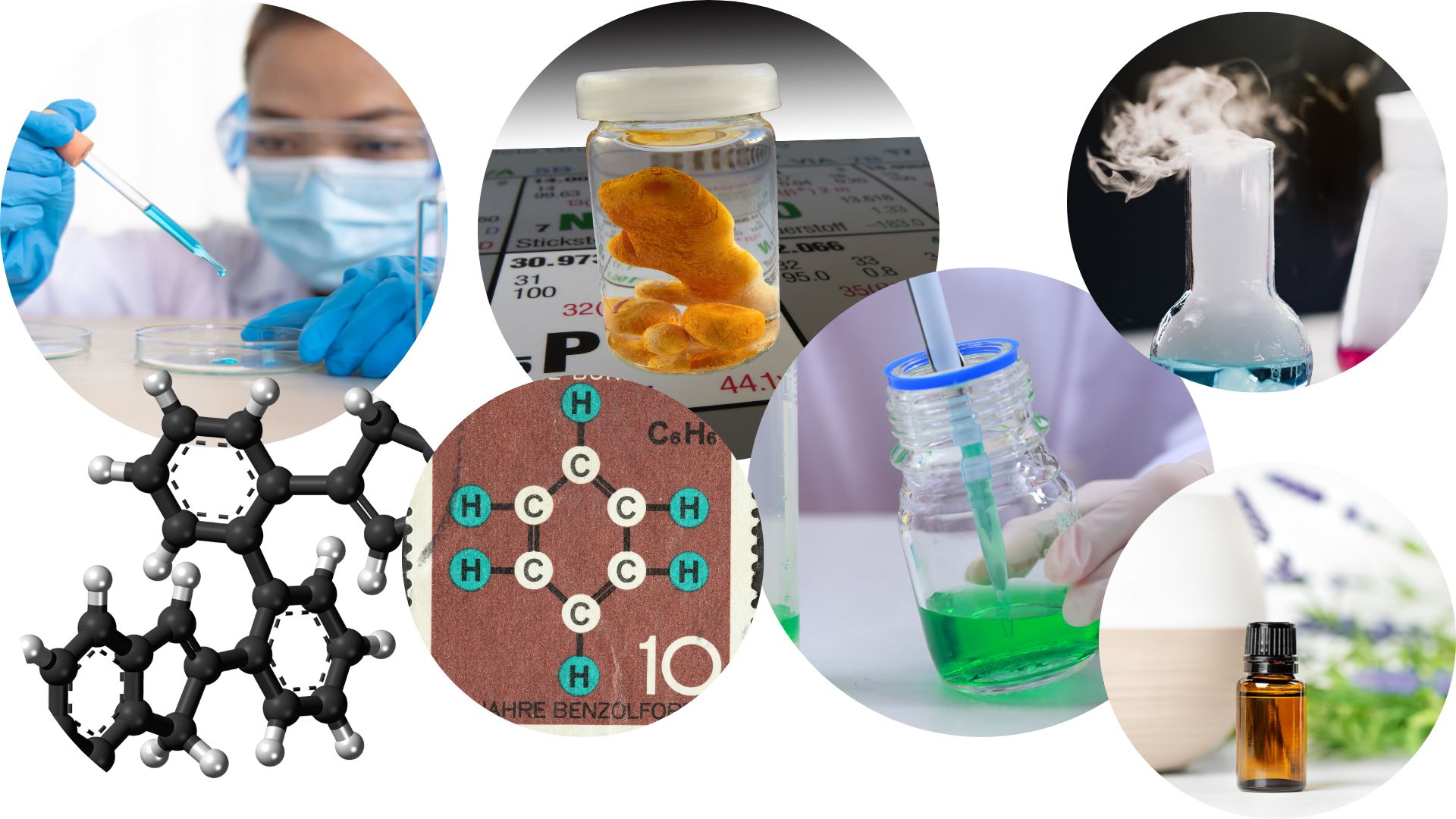 Instructional Goals covered in this module:
Instructional Goals covered in this module:- Explain the concept of aromaticity and identify aromatic compounds using Hückel’s rule.
- Analyze the mechanism of electrophilic substitution of benzene for nitration, halogenation, alkylation, acylation, protonation, and sulfonation.
- Analyze the influence a substituent exerts on the reactivity of a benzene ring and the orientation of electrophilic aromatic substitution.
-
Module 4: Lesson 1: Nomenclature, Aromaticity and Aromatic Structure
Student Learning Outcomes:
Upon completion of this module, students you will be able to:
- Explain the concept of aromaticity and distinguish the main properties of aromatic compounds.
- Identify the aromatic portions present in naturally occurring compounds, given the necessary structures.
- Name and draw the structure of aromatic compounds based on IUPAC rules.
- Distinguish the ortho, meta, and para positions in a monosubstituted benzene ring and apply them to name simple disubstituted aromatic compounds.
- Apply IUPAC rules to name and draw an aromatic compound when the substituents are alkyl, alkenyl, or alkynyl groups, halogens, nitro groups, carboxyl groups, amino groups, hydroxyl groups, and phenyl groups.
- Compare the reactivity of a typical alkene with that of benzene.
2 URLs -
Module 4: Lesson 2: Structure and Stability of Benzene
Student Learning Outcomes:
Upon completion of this module, students you will be able to:
- Estimate the length of the carbon-carbon bonds in benzene, and compare this length with those of bonds found in other hydrocarbons.
- Apply the heat of hydrogenation data to show that benzene is more stable than cyclohexatriene.
- Describe the geometry and structure of the benzene molecule in terms of resonance.
- Apply the molecular orbital theory/ diagram to describe the structure of benzene.
3 URLs -
Module 4: Lesson 3: Aromaticity and the Hückel 4n + 2 Rule
Student Learning Outcomes:
Upon completion of this module, students you will be able to:
- Define aromaticity in terms of the Hückel 4n + 2 rule and determine whether or not a given polyunsaturated cyclic hydrocarbon should exhibit aromatic properties.
- Describe the difference in properties between an aromatic hydrocarbon, such as benzene, and a non-aromatic polyunsaturated cyclic hydrocarbon, such as cyclobutadiene or cyclooctatetraene.
- Draw molecular orbital diagrams for aromatic species, such as benzene, the cyclopentadienyl anion, and pyridine, and compare these diagrams with those obtained for non-aromatic species, such as cyclobutadiene and the cyclopentadienyl cation.
1 URL -
Module 4: Lesson 4: Electrophilic Aromatic Substitution, Aromatic Nitration, Aromatic Slfonation
Student Learning Outcomes:
Upon completion of this module, students you will be able to:
- Draw and explain the mechanisms for the electrophilic aromatic substitution reactions.
- Deduce the products for the common electrophilic aromatic substitutions (halogenation, nitration, sulfonation, alkylation, and acylation).
- Deduce the position of substitution involving aromatic compounds which have more than one substituent.
- Break down the resonance structures for the cationic intermediates involved in electrophilic aromatic substitution reactions on substituted rings.
- Identify which substituents are electron donors and electron withdrawers, activators versus deactivators, and ortho/ para directors versus meta directors for electrophilic aromatic substitution reactions.
1 URL -
Module 4: Lesson 5: Aromatic Substitution Reactions Part II
Student Learning Outcomes:
Upon completion of this module, students you will be able to:
- Deduce the products formed from the substitution reactions of disubstituted benzene rings from the orientational interaction of the two substituents.
- Break down the oxidation of alkyl side-chains, the reduction of nitro groups and aryl ketones, the conversion of halogens to organometallic reagents, the hydrolysis of sulfonic acids, and modifying the influence of strong activating groups as examples of electrophilic substitution reactions.
- Break down the mechanisms, main products, and characteristics of redox reactions of fused benzene rings.
- Explain why nucleophilic aromatic substitutions in the presence of very strong bases (like NH2-, NaoH) proceed by elimination, followed by addition rather than through an anionic intermediate (benzyne).
- Outline the mechanism of nucleophilic aromatic substitution and explain the relative reactivity of substituted aryl halides toward nucleophilic substitution by deduction from the mechanism of the reaction.
4 URLs, 1 Forum -
Module 5: Nitrogen-and Phosphorus-Containing Compounds
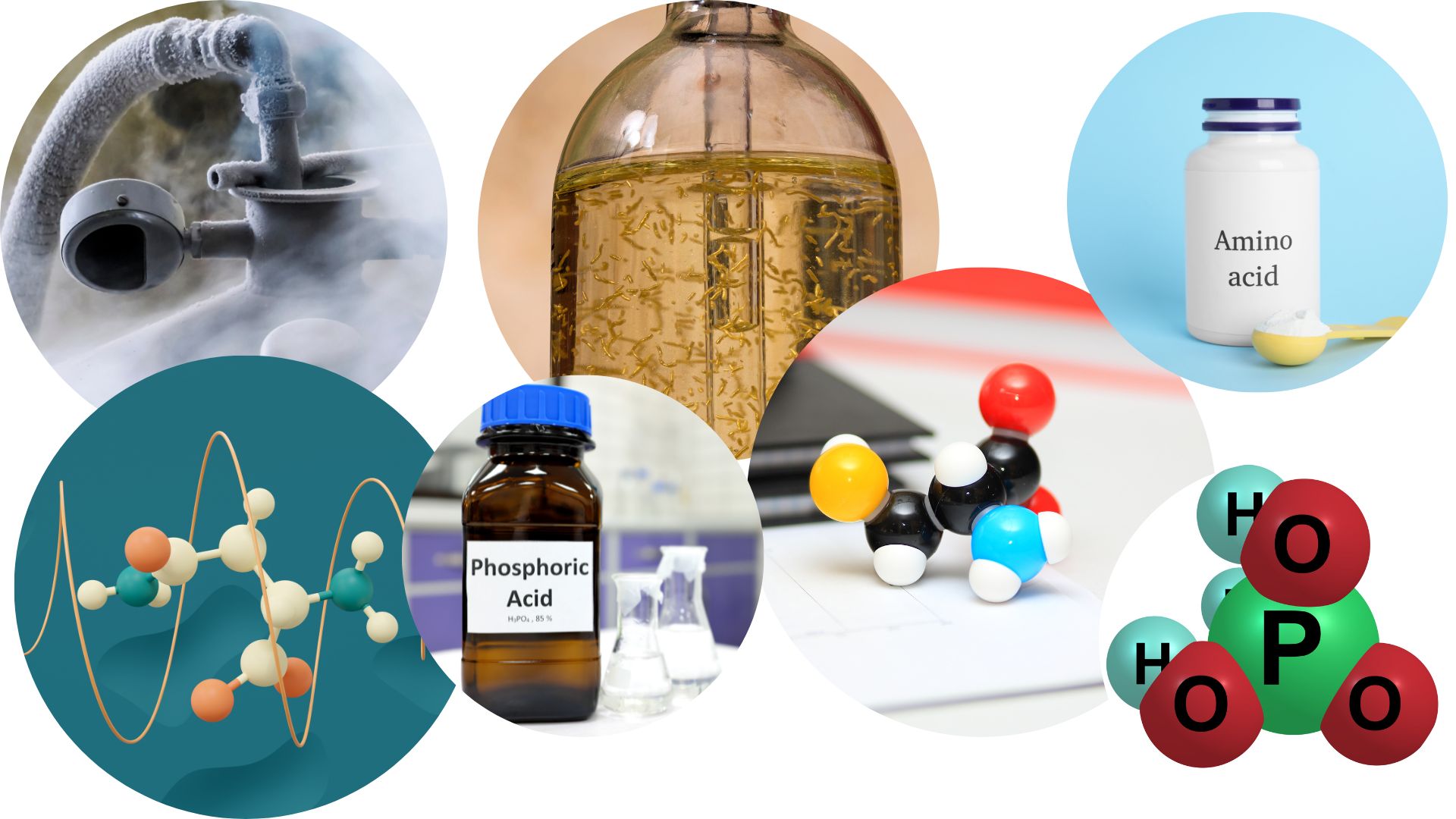 Instructional Goals covered in this module:
Instructional Goals covered in this module:- Understand the structure and reactivity of proteins, amino acids, and polypeptides.
-
Module 5: Lesson 1: Proteins and Peptides
Student Learning Outcomes:
Upon completion of this module, students you will be able to:
- Identify the functional groups that make amino acids amphoteric.
- Understand the mechanisms for forming and cleaving peptide bonds.
- Explain why the C–N bond of an amide is planar.
- Describe some of the functions of proteins, such as structure, catalysis, movement, transport, hormones, protection, storage, and regulation.
- Define the term zwitterion.
- Describe what is meant by the primary, secondary, tertiary, and quaternary structure of a protein.
- Describe how proteins are denatured.
6 URLs -
Module 5: Lesson 2: Amino Acids
Student Learning Outcomes:
Upon completion of this module, students you will be able to:
- Understand the basic structure of the amino acid and peptide bond.
- Describe the chemical properties of the amino acid side group.
- Determine the charge state of an amino acid at indicated pH, including the pH at which the amino acid is a zwitterion, and calculate the isoelectric point of a peptide.
- Understand the reactions of amino acids and their impact on proteins.
- Describe the chemical nature of the peptide bond and evaluate the nature of the peptide bond on folding.
3 URLs -
Module 5: Lesson 3: Phosphorus-Containing Compounds
Student Learning Outcomes:
Upon completion of this module, students you will be able to:
- Describe the nucleophilicity and reducing character of phosphorous compounds and their importance in organic synthesis.
- Understand the common reactions of ylides with aldehydes and ketones.
- Recall the characteristic preparations of ylide reagents.
1 URL, 1 Forum -
Module 6: Spectroscopy
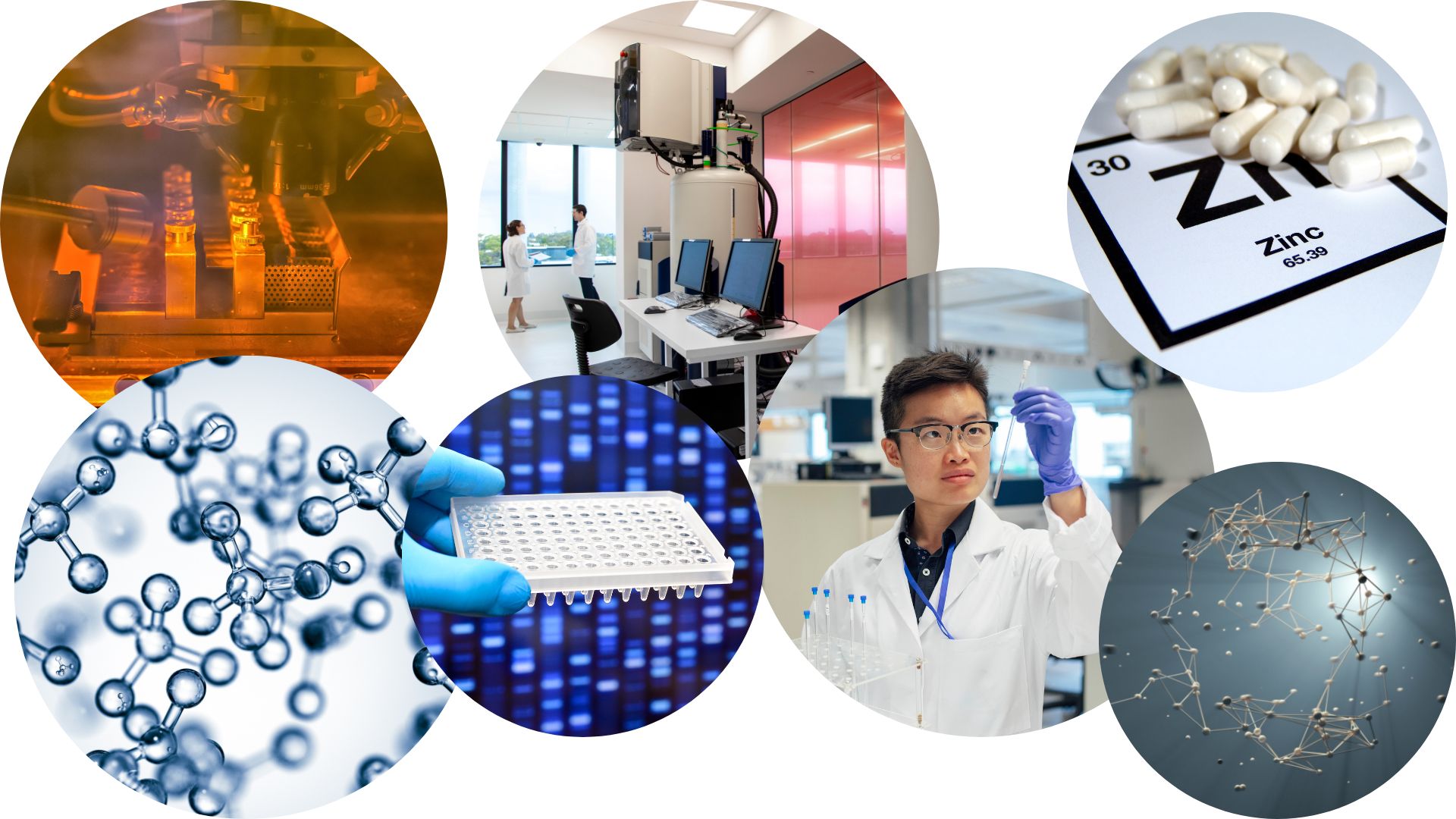 Instructional Goals covered in this module:
Instructional Goals covered in this module:- Understand how instrumental techniques such as nuclear magnetic resonance (NMR) spectroscopy, infrared (IR) spectroscopy, ultraviolet-visible (UVVis) spectroscopy, and mass spectrometry (MS) are used to characterize and provide molecular information about organic compounds.
-
Module 6: Lesson 1: Principles of Molecular Spectroscopy
Student Learning Outcomes:
Upon completion of this module, students you will be able to:
- Explain the basic principles of electromagnetic radiation, which allow the identification of the structures of atoms and molecules.
- Explain why light exhibits both wave-like and particle-like behaviors.
1 URL -
Module 6: Lesson 2: NMR Spectroscopy
Student Learning Outcomes:
Upon completion of this module, students you will be able to:
- Explain the main principles and features underlying NMR spectroscopy.
- Explain how a typical continuous wave spectrometer operates.
- Appraise the reasons responsible for the difference in behavior observed in NMR experiments for the proton nuclei of compounds.
- Determine key regions and peaks within an NMR spectrum.
- Interpret proton chemical shifts associated with different functional groups.
- Gauge the influence of hydrogen bonding and solvent effects on NMR chemical shifts.
- Distinguish spectral information from solvent and standard reference NMR signals.
- Explain how upfield and downfield directions relate to chemical shift (ppm) on the H-NMR spectrum.
- Apply the n+1 rule to estimate the number of neighboring protons based on the number of peaks on the H-NMR spectra.
- Correlate deshielding and spin-spin coupling to changes in NMR spectra.
- Explain the reason for doublet, triplet, and quartet coupling patterns (both multiplicity and intensity).
2 URLs -
Module 6: Lesson 3: Carbon NMR Spectroscopy
Student Learning Outcomes:
Upon completion of this module, students you will be able to:
- Predict the appearance of the proton noise-decoupled 13C NMR spectrum from the structure of a compound.
- Apply the proton noise-decoupled and proton-coupled 13C NMR spectrum to determine the structure of a compound.
- Explain why 13C spectra take longer to obtain than 1H spectra.
1 URL -
Module 6: Lesson 4: Supplemental NMR Topics
Student Learning Outcomes:
Upon completion of this module, students you will be able to:
- Correlate nuclear spin to the nucleon composition of a nucleus.
- Question the use of a spinning charge in a magnetic field to deduce NMR phenomena.
- Examine the relaxation mechanisms involved in NMR microscopy.
- Compare and contrast pulsed Fourier transform spectroscopy from CW NMR spectrometry.
- Gauge the influence of hydrogen bonding and anisotropy on NMR chemical shifts.
4 URLs -
Module 6: Lesson 5: Infrared Spectroscopy
Student Learning Outcomes:
Upon completion of this module, students you will be able to:
- Identify the conditions in which IR spectroscopy is generally used and what it is used to measure.
- Predict the IR peaks for common organic functional groups, including ketones, carboxylic acids, and alcohols.
- Deduce how the vibrational mode of bonds in an organic molecule affects signal on the IR spectrum.
- Correlate bond stretching modes of functional groups to the absorption frequencies of an organic compound.
- Differentiate between infrared active and inactive vibrational modes.
2 URLs -
Module 6: Lesson 6: UV-Visible Spectroscopy
Student Learning Outcomes:
Upon completion of this module, students you will be able to:
- Explain the basic principles, terms, and working principles of UV-Visible spectroscopy.
- Explain the relation between HOMO, LUMO, and the absorption wavelength.
- Determine how organic molecules with conjugated pi bonds undergo electronic transitions.
- Describe the relation between percent transmittance and wavenumber (cm^-1).
1 URL -
Module 6: Lesson 7: Mass Spectroscopy
Student Learning Outcomes:
Upon completion of this module, students you will be able to:
- Break down the principles underlying mass spectrometry and the working principles of the mass spectrometer.
- Gauge the importance of molecular ions and fragmentation patterns in mass spectrometry and distinguish molecular ions and base peaks of a mass spectrum.
- Calculate the mass of a molecule based on its elemental composition.
- Examine isotope clusters and patterns in mass spectrometry.
- Examine the rearrangement mechanisms that occur during the fragmentation of organic molecules.
1 URL -
Module 7: Separations and Purifications
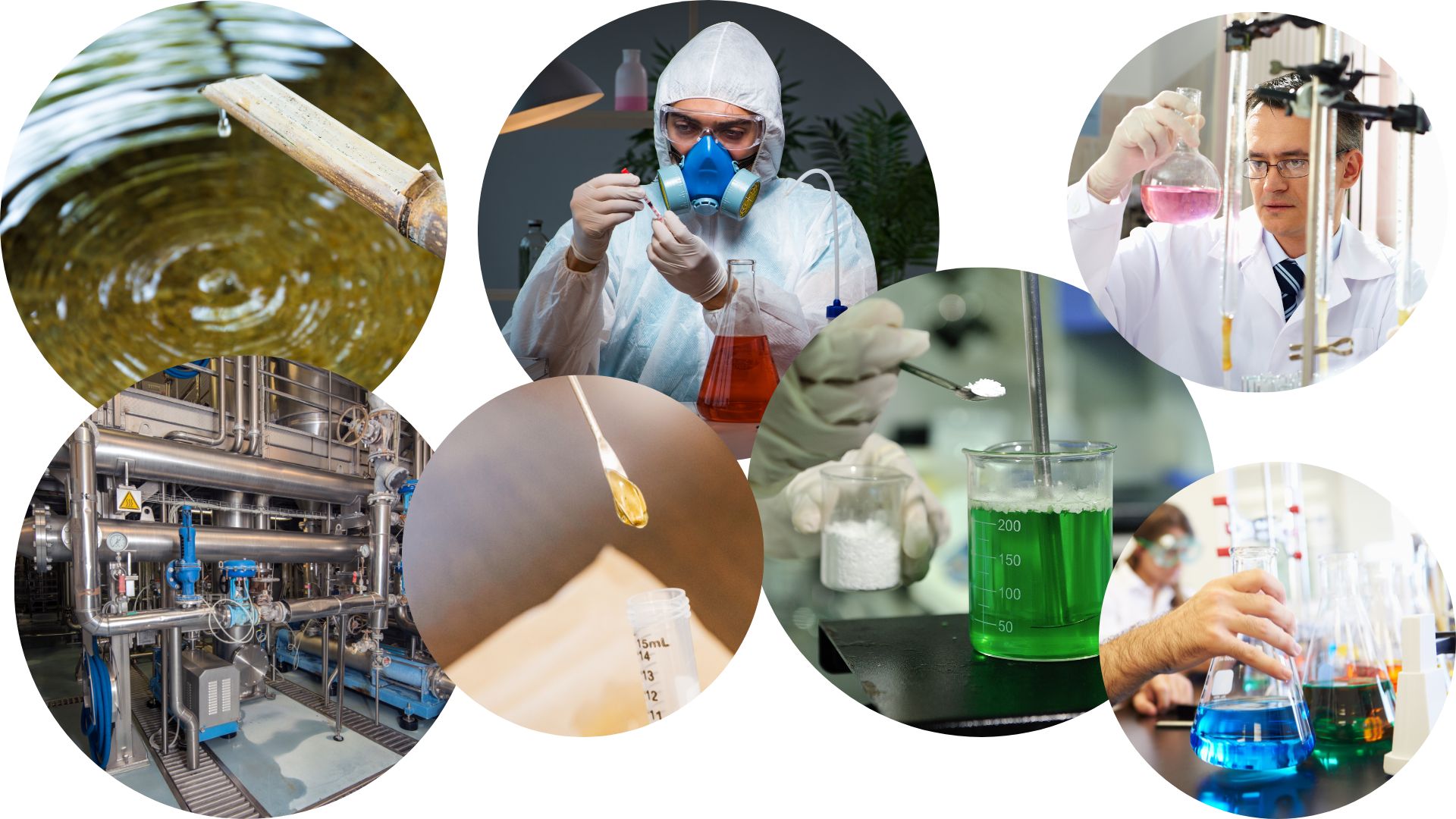 Instructional Goals covered in this module:
Instructional Goals covered in this module:- Understand the techniques used for the separation of mixtures.
-
Module 7: Lesson 1: Basic Concepts of Separation
Student Learning Outcomes:
Upon completion of this module, students you will be able to:
- Explain the differences between pure substances and mixtures and homogeneous and heterogeneous mixtures.
- Determine the best processes to purify mixtures, and identify examples where these are useful to obtain products from raw materials.
- Categorize the general methods for separation and purification.
2 URLs - Explain the differences between pure substances and mixtures and homogeneous and heterogeneous mixtures.
-
Module 7: Lesson 2: Equilibrium Separations
Student Learning Outcomes:
Upon completion of this module, students you will be able to:
- Examine the key concepts involved in the extraction process.
- Judge whether a given solute is more likely to dissolve in the aqueous or organic layer within a separatory funnel.
- Differentiate between the separatory capabilities of simple and fractional distillation.
- Appraise the conditions in which distillation is a helpful separatory technique.
- Identify the properties that determine whether compounds should be separated through chromatography.
- Distinguish the advantages and physicochemical conditions for separation through normal and reverse-phase chromatography.
4 URLs, 1 Forum -
Course and Self Evaluation & Certificate

In this section, you can provide feedback about this course to help us make NextGenU.org better. Once evaluations are completed, you will be able to download your certificate of completion.
Click here give your feedback

